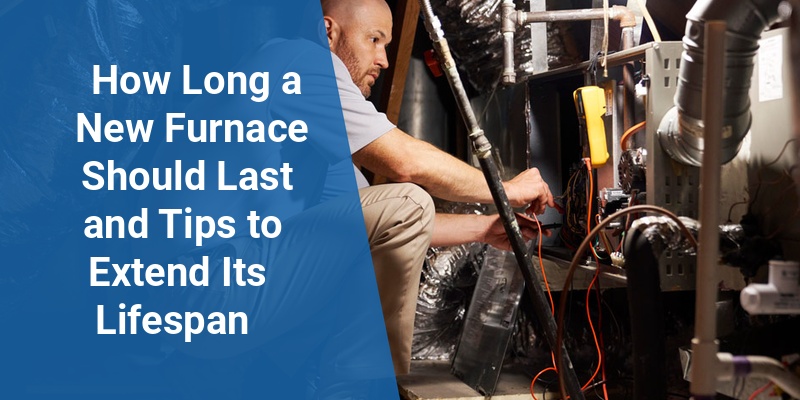Choosing a new furnace is a major investment for homeowners aiming to keep their homes warm and comfortable. Knowing how long a new furnace should last helps in budgeting for replacement and maintenance. On average, modern furnaces have a typical lifespan ranging from 15 to 30 years, depending on factors like type, usage, maintenance, and installation quality.
| Furnace Type | Average Lifespan | Key Factors Affecting Longevity |
|---|---|---|
| Gas Furnace | 15–20 Years | Regular maintenance, fuel quality, installation |
| Electric Furnace | 20–30 Years | Proper usage, minimal wear, electrical efficiency |
| Oil Furnace | 15–20 Years | Fuel quality, cleaning frequency, climate |
Factors Influencing the Lifespan of a New Furnace
The longevity of a furnace is influenced by multiple factors that determine how effectively it operates over time. Understanding these factors helps homeowners optimize their furnace’s performance and lifespan.
Type of Furnace
Gas, electric, and oil furnaces each have different mechanical designs and fuel sources impacting durability. Electric furnaces tend to last longer as they have fewer mechanical parts, whereas gas and oil furnaces require combustion components, which can wear out faster.
Quality of Installation
Professional and correct installation is critical to avoid common issues like poor airflow, inefficient combustion, or improper sealing that can reduce furnace lifespan.
Maintenance Practices
Consistent maintenance such as filter replacement, cleaning burners, and annual inspections can significantly extend furnace life. Neglected maintenance often results in failure of key components early on.
Usage and Climate
Regions with colder climates cause furnaces to run more frequently, accelerating wear and tear. Similarly, constant use in poorly insulated homes increases strain on the furnace.
Average Lifespans of Different Furnace Types
Among the three common furnace types, lifespan varies primarily due to technology and operation conditions.
Call 888-906-9139 for Free Local HVAC Quotes – No Obligation, Just Savings!
- Gas Furnaces: Typically last between 15 and 20 years. Regular servicing and clean fuel are vital for reaching the upper limit.
- Electric Furnaces: Can last 20 to 30 years. They have fewer moving parts, making them less prone to breakdown but potentially more costly in energy consumption depending on electricity rates.
- Oil Furnaces: Generally operate well for 15 to 20 years with good maintenance. Oil quality directly influences performance and longevity.
Signs It’s Time to Replace Your Furnace
Recognizing when a furnace reaches the end of its lifespan ensures safety and energy efficiency in your home.
- Frequent Breakdowns: Repairs become more common and expensive beyond the midpoint of the furnace’s lifespan.
- Inefficient Heating: Noticeable decline in warmth or rising energy bills may signal internal wear.
- Age: Furnaces 15+ years old should be evaluated for replacement or major repairs.
- Excessive Noise: Unusual grinding, banging, or rattling often indicates significant mechanical problems.
Tips to Extend Your Furnace’s Lifespan
Proper furnace care can maximize your heating system’s longevity and improve indoor comfort.
- Schedule Annual Professional Maintenance: Licensed HVAC technicians can identify issues before they worsen.
- Regular Filter Replacement: Change filters every 1-3 months to maintain airflow and reduce system strain.
- Keep Vents and Registers Clean: Ensure unobstructed airflow to prevent overheating.
- Seal Ductwork: Leaky ducts force furnaces to work harder, decreasing lifespan.
- Upgrade Thermostat: Programmable or smart thermostats optimize furnace operation and reduce wear.
Comparing Furnace Brands for Durability
| Brand | Average Lifespan (Years) | Notable Features | Warranty |
|---|---|---|---|
| Trane | 15-20 | Durable components, efficient operation | 10-year limited warranty |
| Carrier | 15-20 | Advanced technology, quiet operation | 10-year limited warranty |
| Lennox | 18-22 | High efficiency models available | 10-year limited warranty |
| Goodman | 12-18 | Affordable, reliable | 10-year limited warranty |
Environmental and Energy Efficiency Considerations
Modern furnaces focus on energy efficiency, which can also impact lifespan indirectly. High-efficiency furnaces reduce fuel consumption and environmental footprint. However, advanced models may require meticulous maintenance to prevent premature wear.
Homeowners should look for furnaces with the ENERGY STAR rating, as these units are designed for optimized energy use and durability.
Cost Implications of Furnace Lifespan
Understanding how long furnaces last helps budget for replacement and maintenance.
- Initial Cost: New furnaces range from $2,500 to $7,500 installed, depending on type and efficiency.
- Maintenance Costs: Annual tune-ups cost approximately $100–$300.
- Repair vs. Replacement: Repairing a furnace older than 15 years is often less cost-effective than replacement.
- Energy Bills: Newer, efficient furnaces reduce operational costs.
Planning for furnace replacement well before failure ensures no sudden heating loss during winter.
